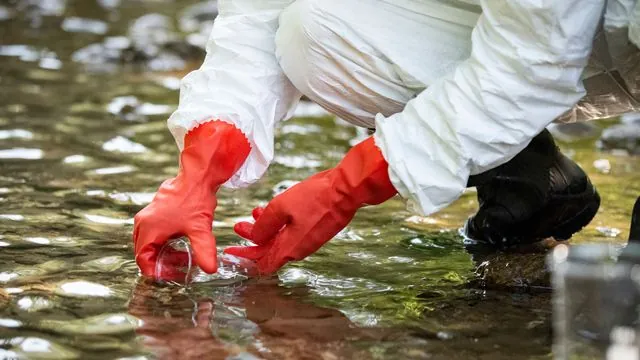
Shocking Study Reveals Microplastics and PFAS Thriving in Waste Treatment Systems!
2024-11-19
Author: Nur
Shocking Study Reveals Microplastics and PFAS Thriving in Waste Treatment Systems!
In a groundbreaking study, researchers have discovered that while wastewater treatment plants effectively remove up to 99% of microplastics and a significant amount of per- and polyfluoroalkyl substances (PFAS) from liquid waste, these pervasive pollutants are not eliminated but rather concentrated in biosolids. These biosolids, often repurposed as fertilizers for farmland, are inadvertently reintroducing these harmful contaminants back into the environment, raising alarming concerns about their long-term impact on soil and crops.
Key Findings:
1. **Wastewater Treatment Triumphs and Tragedies:** While the data indicates that wastewater treatment plants successfully detoxify huge volumes of water, they simultaneously funnel microplastics and PFAS into solid waste, or biosolids, that is treated and spread on agricultural lands.
2. **A Fertile Ground for Contamination:** According to the National Biosolids Data Project, 70% of biosolids from Illinois plants are used in farming, meaning a vast amount of microplastics and PFAS is cycling back into our food systems.
3. **The Call for Change:** Researchers assert that the only way forward is to curb the production of microplastics and PFAS upstream—at the source—rather than continuing to battle their inevitable spread in treatment processes.
This innovative study, published in the journal *Science of the Total Environment*, sheds light on the processes at landfill sites and wastewater treatment facilities in Illinois. Scientists led a detailed analysis to assess both microplastics and PFAS presence, addressing a critical gap where many studies focus on single contaminants or systems in isolation.
Unexpected Results:
What surprised the research team was the high levels of PFAS detected in landfill leachate, where microplastics were found in lower concentrations than anticipated. This raises significant questions about the association between waste management practices and the pollution of surrounding ecosystems.
A Global Crisis:
The global scale of plastic production is staggering, with hundreds of millions of tons produced annually. Alarmingly, around 79% of this plastic ends up lingering in landfills or leaking into the environment. Both microplastics and PFAS are becoming ubiquitous, detected in everything from soils and waterways to human bodies, highlighting their looming threat to public health and the environment.
Solutions in Sight?
The researchers emphasize that current biosolid disposal methods are far from adequate. They stress that landfills, while playing a role in retaining waste, cannot be relied upon to solve the growing crisis. Treatment of biosolids before disposal could be a viable solution—albeit an expensive one.
“We must confront the reality that spreading these contaminants on farmlands is fundamentally flawed,” remarked John Scott, a research scientist at the Illinois Sustainable Technology Center. “It’s time to initiate a shift away from the manufacture of these harmful materials at their source. We must act now—before we face irreparable damage to our ecosystems.”
Take Action Now!
This study stands as a clarion call for immediate action against plastic and PFAS pollution, as well as a reminder of the need for comprehensive strategies to mitigate the collapse of our environment before it’s too late.
What's Next?
As the world grapples with these challenges, it is vital to keep this discussion alive in legislative circles and public consciousness. Innovative solutions and strict regulations must be established—and soon—if we are to safeguard our planet for future generations.



 Brasil (PT)
Brasil (PT)
 Canada (EN)
Canada (EN)
 Chile (ES)
Chile (ES)
 España (ES)
España (ES)
 France (FR)
France (FR)
 Hong Kong (EN)
Hong Kong (EN)
 Italia (IT)
Italia (IT)
 日本 (JA)
日本 (JA)
 Magyarország (HU)
Magyarország (HU)
 Norge (NO)
Norge (NO)
 Polska (PL)
Polska (PL)
 Schweiz (DE)
Schweiz (DE)
 Singapore (EN)
Singapore (EN)
 Sverige (SV)
Sverige (SV)
 Suomi (FI)
Suomi (FI)
 Türkiye (TR)
Türkiye (TR)